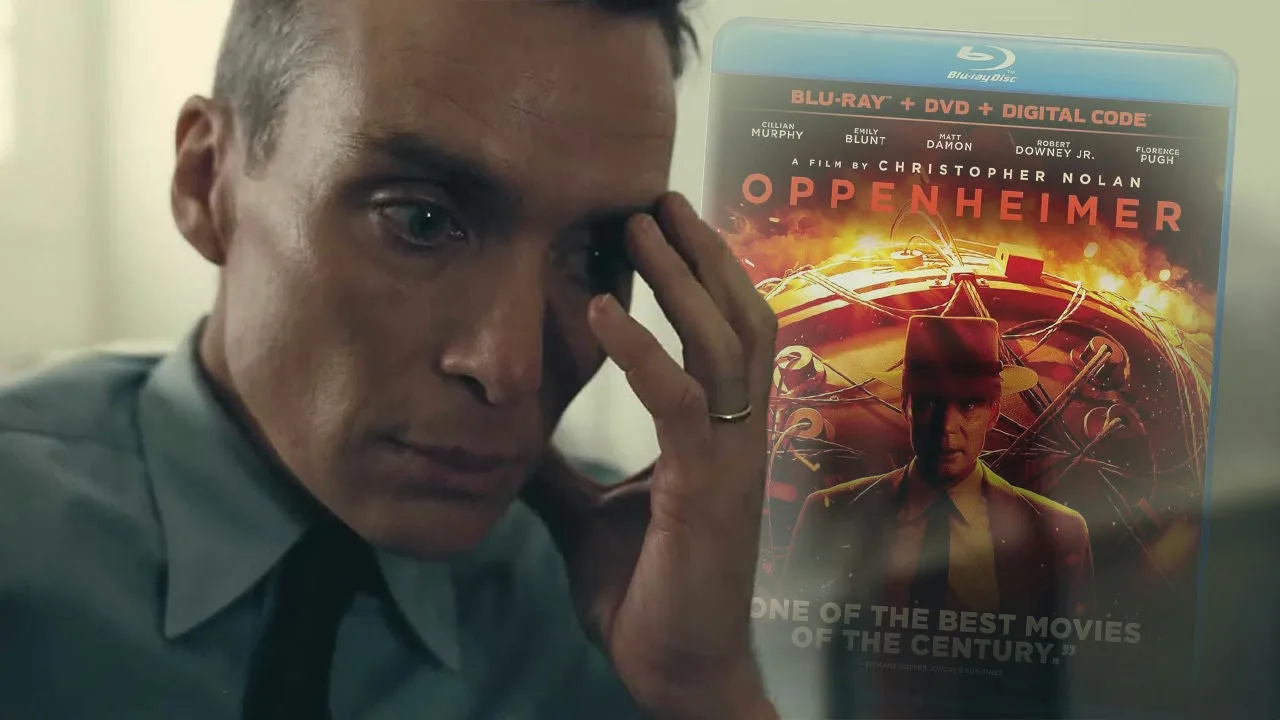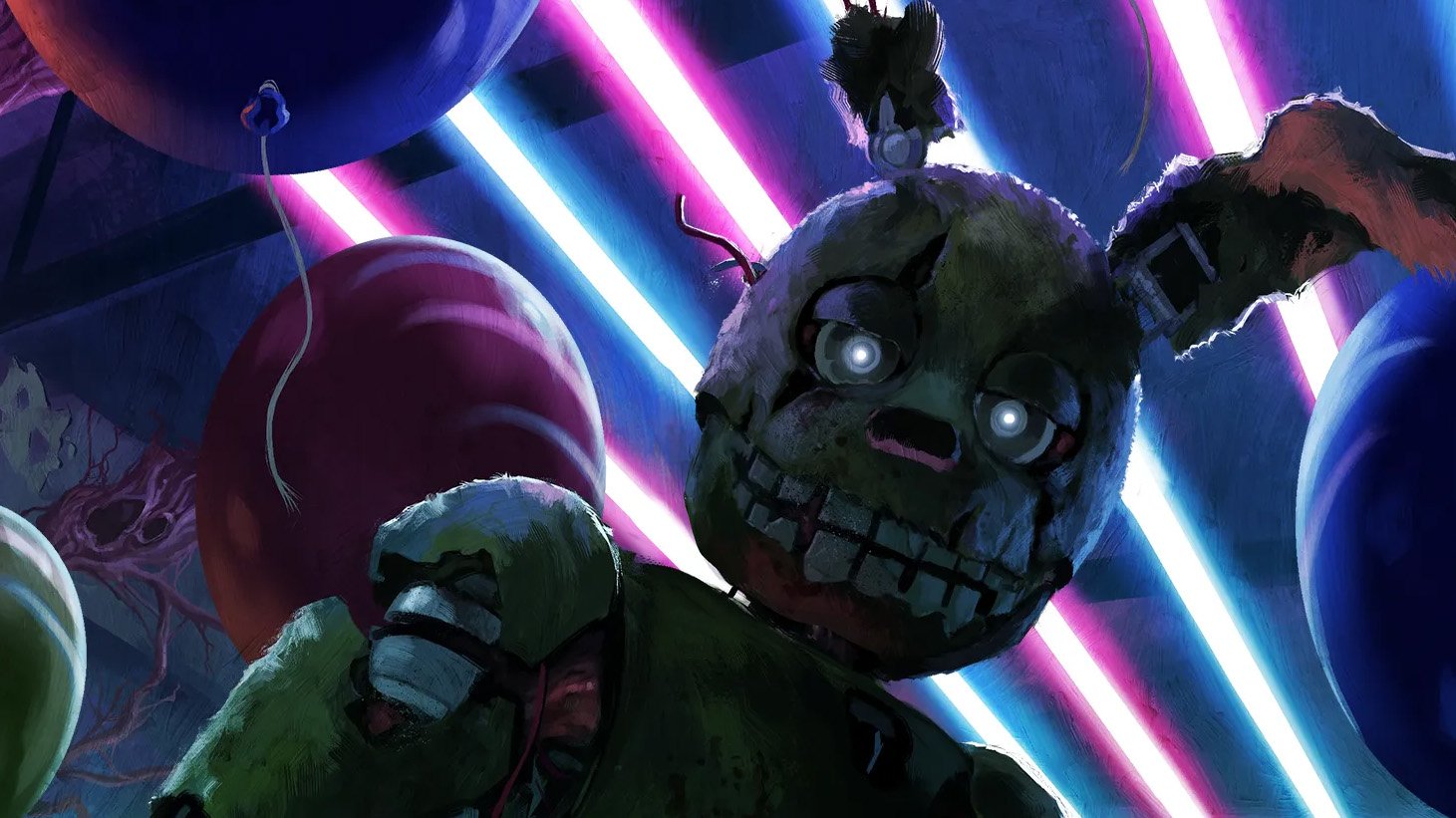Christopher Nolan Goes to Bat For Physical Media: ‘It’s Scary For Filmmakers’
Estimated reading time: 8 minutes
Christopher Nolan is responsible for one of the greatest burns of the modern film industry. In the middle of the pandemic, when Warner Brothers decided to put their entire 2021 release slate on HBO Max, he cut loose an incredible quote, saying, “Some of our industry’s biggest filmmakers and most important movie stars went to bed the night before thinking they were working for the greatest movie studio and woke up to find out they were working for the worst streaming service.”
This at minimum, aside from the COVID-induced panic in the upper echelon of Warner executives, proves that Nolan has always firmly believed that streaming is not the thing. So it’s no surprise that with the Blu-ray release of Oppenheimer, he’s once again going to bat for physical media.
“If you buy a four KUHD, you buy a Blu-ray, it’s on your shelf, it’s yours. No company is going to break into your house and take it from you and repossess it. It’s yours and you own it. That’s never really the case with any form of digital distribution,” Nolan said.
But as one of cinema’s most vocal defenders, there’s something more troubling than consumers’ experience with their post-theatrical media; the slow death of physical media. With the emergence of streaming as a crushing blow to physical media and as Best Buy recently announced they would begin phasing out their physical media sales, including DVD and Blu-ray, IGN asked Nolan and Oppenheimer producer Emma Thomas about the past and present of home media and what it means to the economics of the film industry.
The Importance of Physical Media
With the advent of Beta tapes and VHS in the ‘70s, and their eventual take-off in the ‘80s when they became affordable and ubiquitous, the home video market has been an integral part of a film’s financing. Suddenly, studios didn’t have to worry about recouping a film’s entire budget in theaters. In the years since, with DVD and Blu-ray offering limitless re-releases, the home video market has given life to movies we otherwise might not have seen, or a second chance to films and filmmakers who didn’t quite blow up the box office.
But with the rise of streaming, and studios’ insistent push in that direction, comes the apparent slow death of physical media. Which is obviously a bad thing for the business and also a move that doesn’t seem to have a longer view in mind.
“It’s an essential revenue stream. I mean, Best Buy is certainly carrying this movie, and they’re going to carry on selling the players, so I’m not sure quite what motivated that decision. It doesn’t really make sense, but a lot of economic decisions around home video have always been based on the need to show short-term growth rather than the long-term health of the business,” Nolan said on the subject.
Thomas adds, “I think that the slow death of physical media is a terrible thing for consumers. I think it’s a terrible thing for filmmakers who want their films to have a life beyond, beyond whatever their initial release is. And I think that all of us should be doing everything that we can to keep it going.”
The truth is, it’s impacted the kinds of movies being made while the realities of how expensive movies are have not changed as much. There’s the budget of the actual production, the cost of marketing, and the split with theaters — all that needs to be recouped before a producer can start to see profit. Matt Damon might explain it better even while his mouth is on fire. During an appearance on Hot Ones, he digs into the intricacies of home video market economics, explaining how he did a movie, Behind the Candelabra, that costs $25 million but because of all the costs, it had to earn $100 million before he saw a profit.
“The idea of making $100 million for [Behind the Candelabra is] a massive gamble, in a way that it wasn’t in the ’90s,” Damon said.
For Christopher Nolan, a director who got his start on indie fare like Following and Memento, movies from an unproven director with no guarantee of a financial return, he’s not convinced movies like that are impossible these days, just different.
“Getting Memento made was not easy,” Nolan recalled. “We could not get it distributed, so I couldn’t sit here and say, well, it’s harder now to get something distributed. Back then when we released Memento, there wasn’t a distributor as effective as A24 in the world. It’s putting out all kinds of incredible and challenging movies on a very regular basis. I mean, they do an amazing job. It’s far better than the guys who were around when we were doing Memento. It’s not a simple progression as far as the funding though. Yes, money from physical media fed into funding Memento, for example, but at the same time, there’s a lot of money that comes in from streaming and everything. I think these things sort of move around rather than fundamentally change.”
Film Death and Taxes
Technology and the film industry continue to shift, doing the same thing just down a different avenue. Another strange industry phenomenon that fits that bill is a movie just straight up disappearing. In the old days, film prints would be thought lost or destroyed for decades before being re-discovered in a janitor’s closet of a mental hospital in Oslo. Now all it takes is a thirst for tax breaks. From Batgirl to John Cena’s Coyote vs. Acme project, Warner Brothers has made a recent habit of canceling movies that are already finished, a move that certainly hasn’t paid off for the studio where its reputation is concerned. When asked about the idea of a streaming service disappearing a film, Thomas can think of a word to describe it.
“Awful,” she said. “It’s crazy. I can imagine plenty of bad things, but I think it would be absolutely appalling to spend two years of your life on a movie and then have it just disappear completely or not be allowed a release. I think that that would just be a terrible thing. So I sympathize deeply with the filmmakers that that’s happened to.”
But it also brings up another issue with physical media versus streaming; control. For both the artist and the consumer.
“I’m beginning to have conversations with filmmakers who have made successful films that have gone full streaming sites that have been taken off those sites and don’t exist in any form and there’s no control,” Nolan said. “It’s scary for filmmakers who don’t have that release right now. It’s going to be an increasingly big issue for filmmakers, and it’s something that we’re going to have to address with the streamers at some point.”
The other concern, unless you’re counting on those janitors in Norway to save your film, is an archival one. Take The Dark Knight for example, whose Blu-ray story touches on just about everything we’ve talked about here. In fact, the Blu-ray release was an argument in favor of employing IMAX for the film in the first place.
“The Dark Knight was the first major Blu-ray hit title. When we decided to shoot IMAX on The Dark Knight, we went to Warner Brothers and said, there will be benefit on home video. Blu-ray was a new format then that they were looking to push. You’ll see the difference in quality from these high-resolution IMAX cameras,” Nolan explained. “That’s carried through in all our home video releases because we’ve carried on using those large film formats. Oppenheimer was no exception, and we put a lot of care and attention to maximizing the image quality so that the benefit of shooting IMAX film is retained.”
On the other hand, for the consumer, the archival aspect of physical media is more than just shelf space, according to Thomas.
“It’s been very interesting actually, with Oppenheimer coming out and meeting a lot of people who are talking to us about the film. And a lot of them are talking about which of Chris’s films are their favorite. And Interstellar keeps coming up,” Thomas said. “And now, a lot of these people are way younger than they would’ve been able to see that film when it came out in cinemas. And it’s very clear that they’re seeing it on physical media or have seen it on physical media over time. And I think that disallowing people that chance to find filmmakers, to find movies, to experience stories is a great shame.”
It’s a conversation that will keep going, of course, as the distribution avenues available to studios continue to evolve and the filmmakers creating the art that’s worth distributing find ways to exist within that system. For Christopher Nolan, though, he’s concerned with the long-term viability of the films he’s creating right now.
“We’ve been having this discussion with home video and retailers for many years in terms of, it’s always sort of undervalued relative to where it is in the ecosystem,” Nolan said. “I think a lot of that is because Wall Street is always asking companies about their future, about where are you showing growth, where are you moving to? Of course, as filmmakers, what we’re interested in is right now, how are people watching things? What’s the best way for someone to watch it? And we want to maximize that.”









